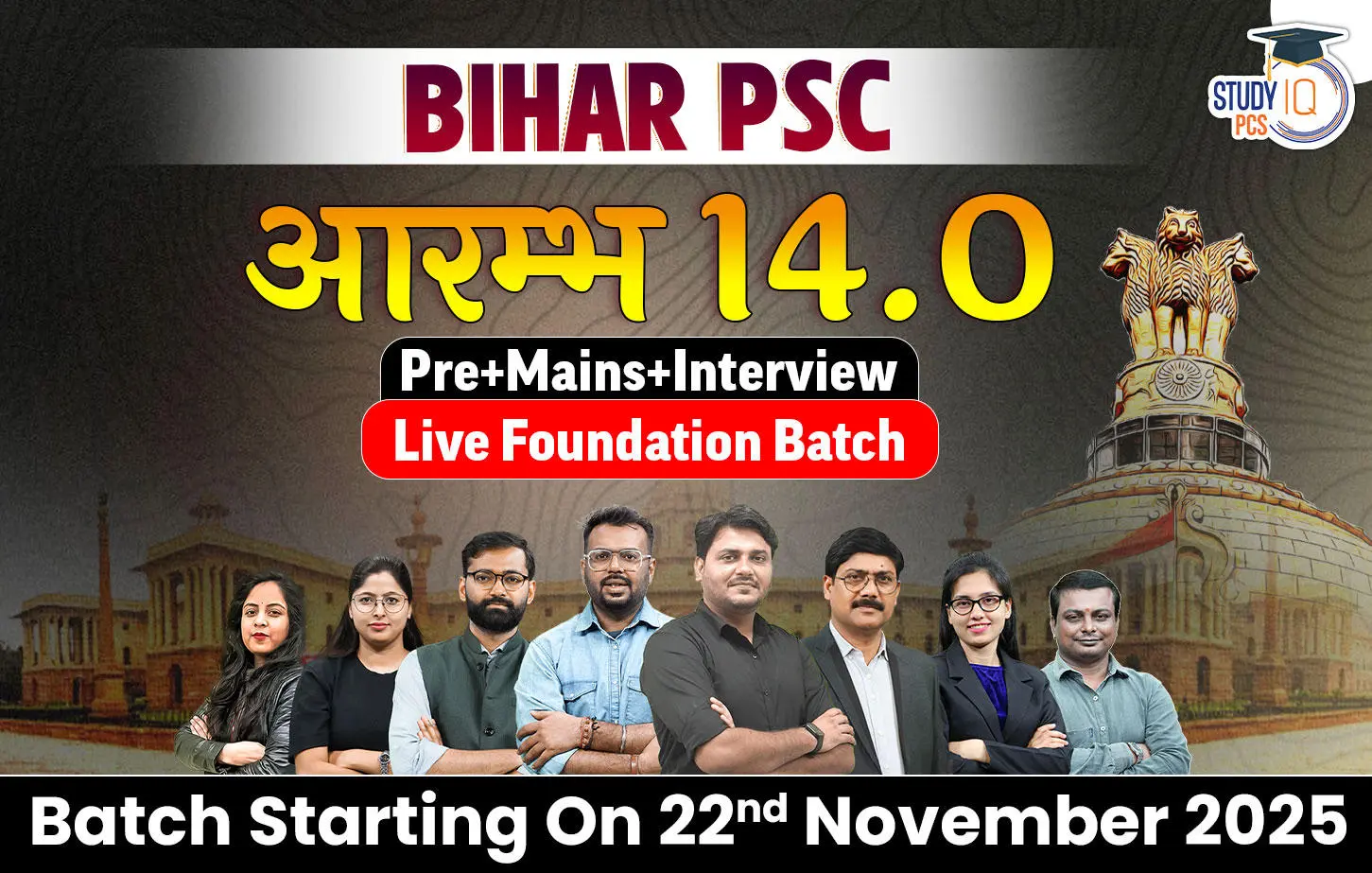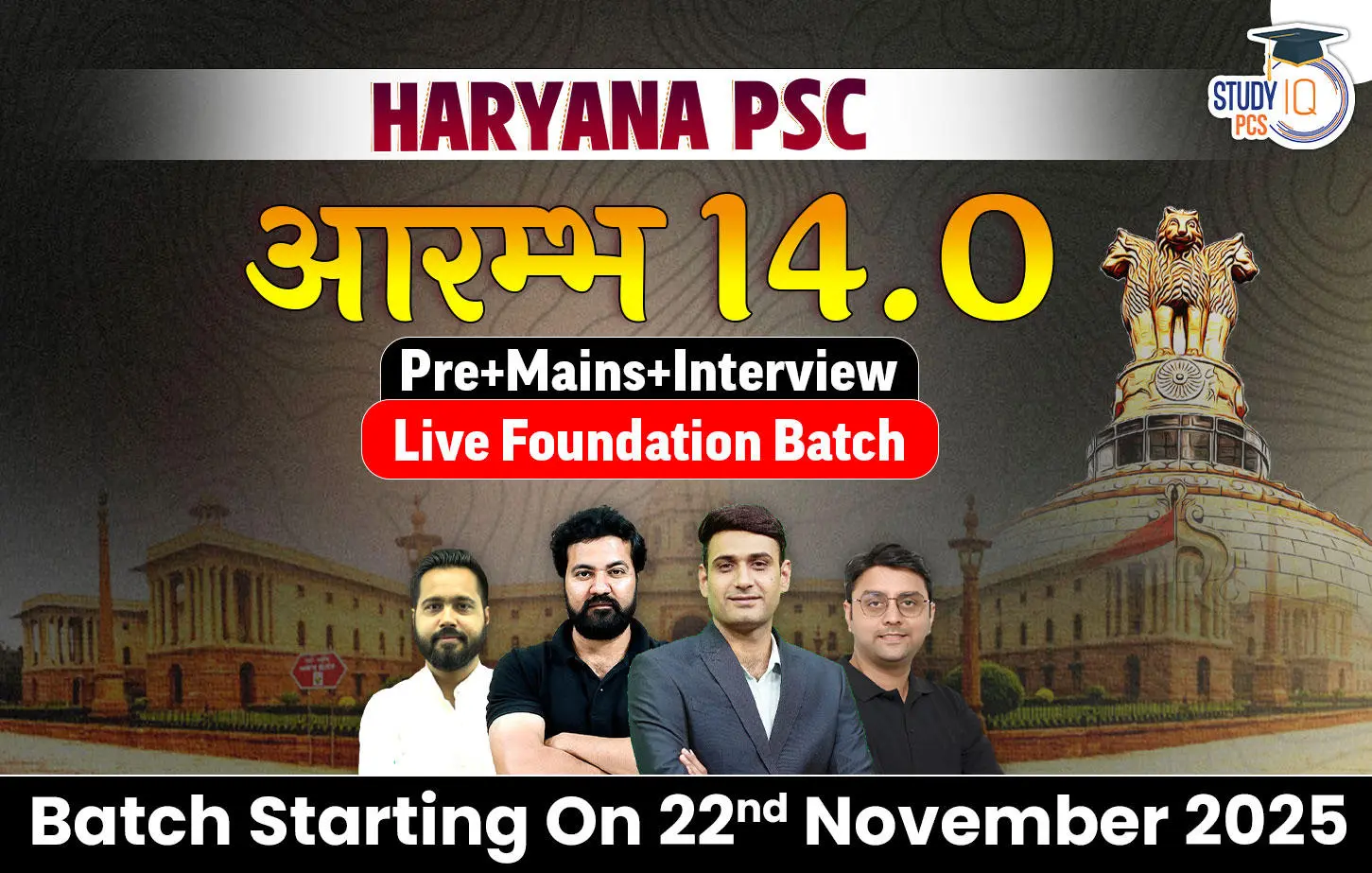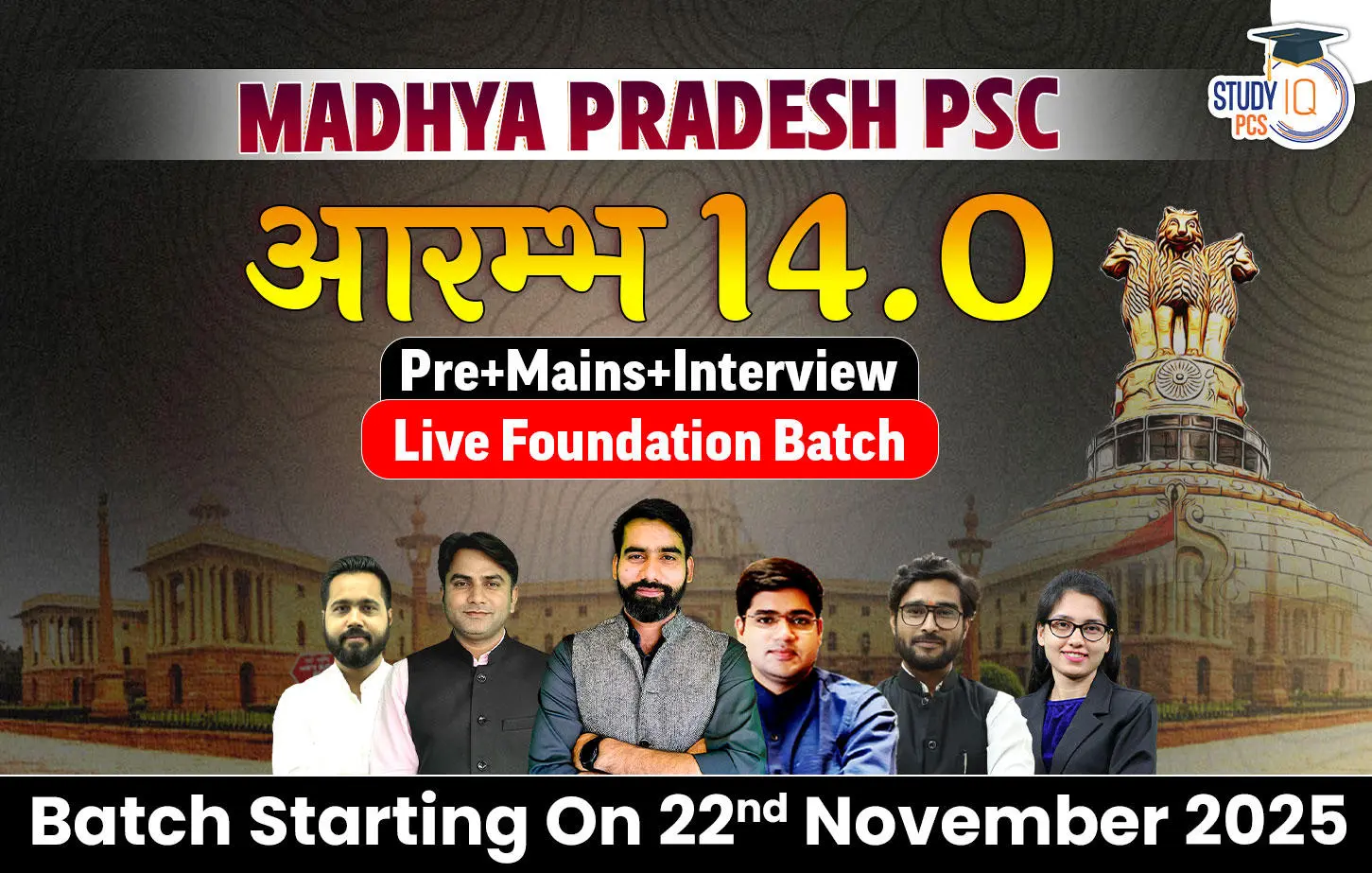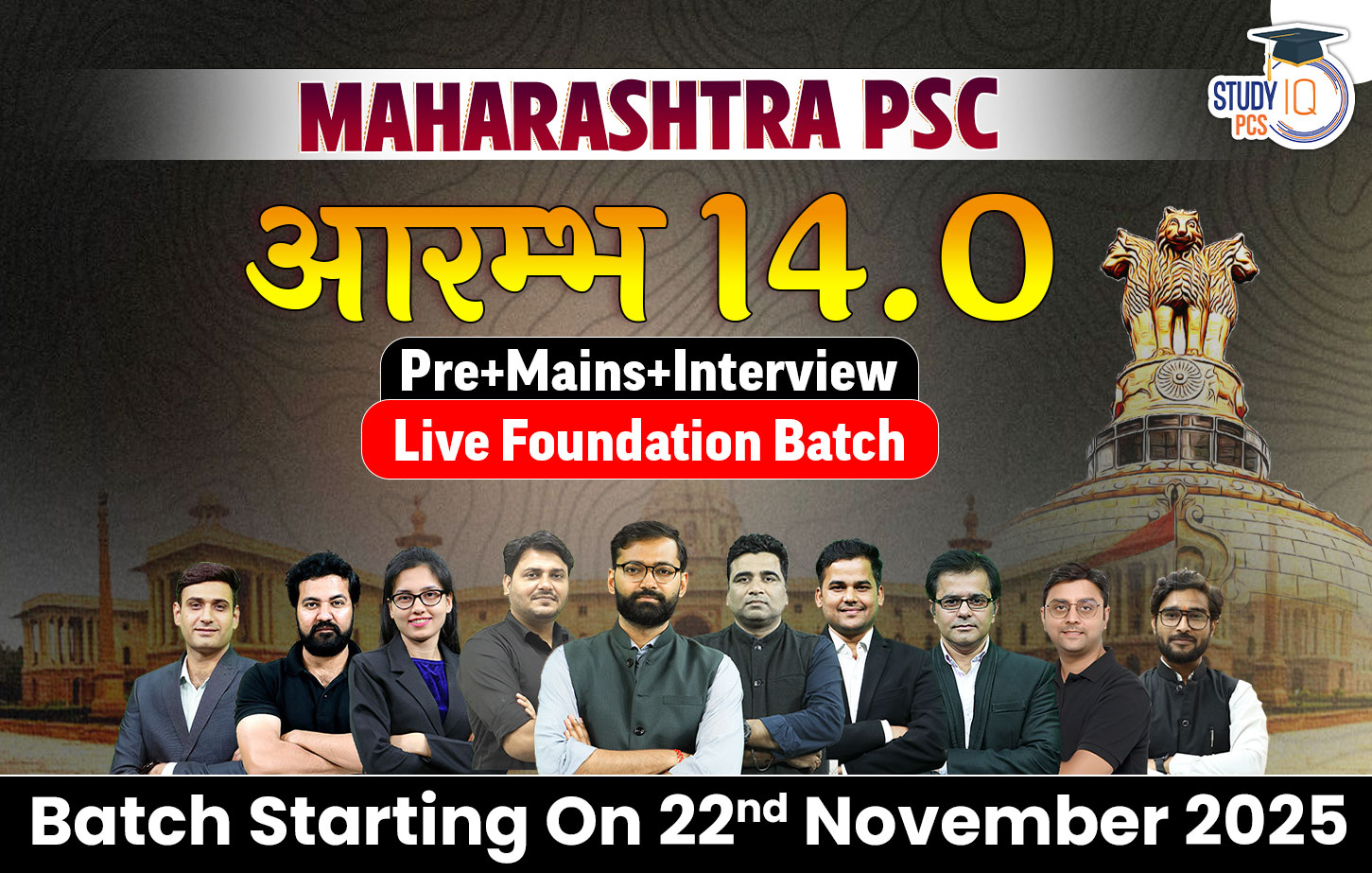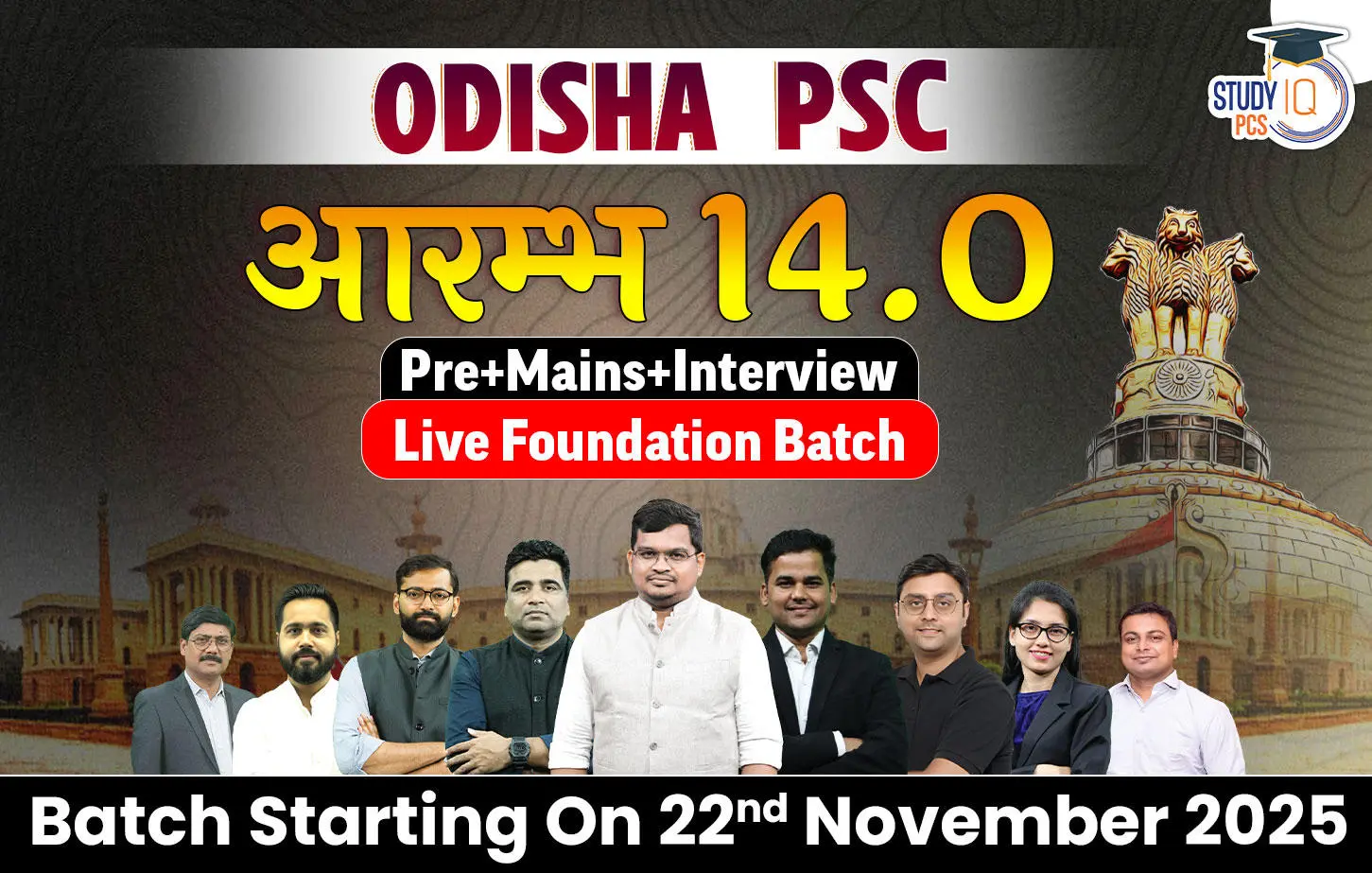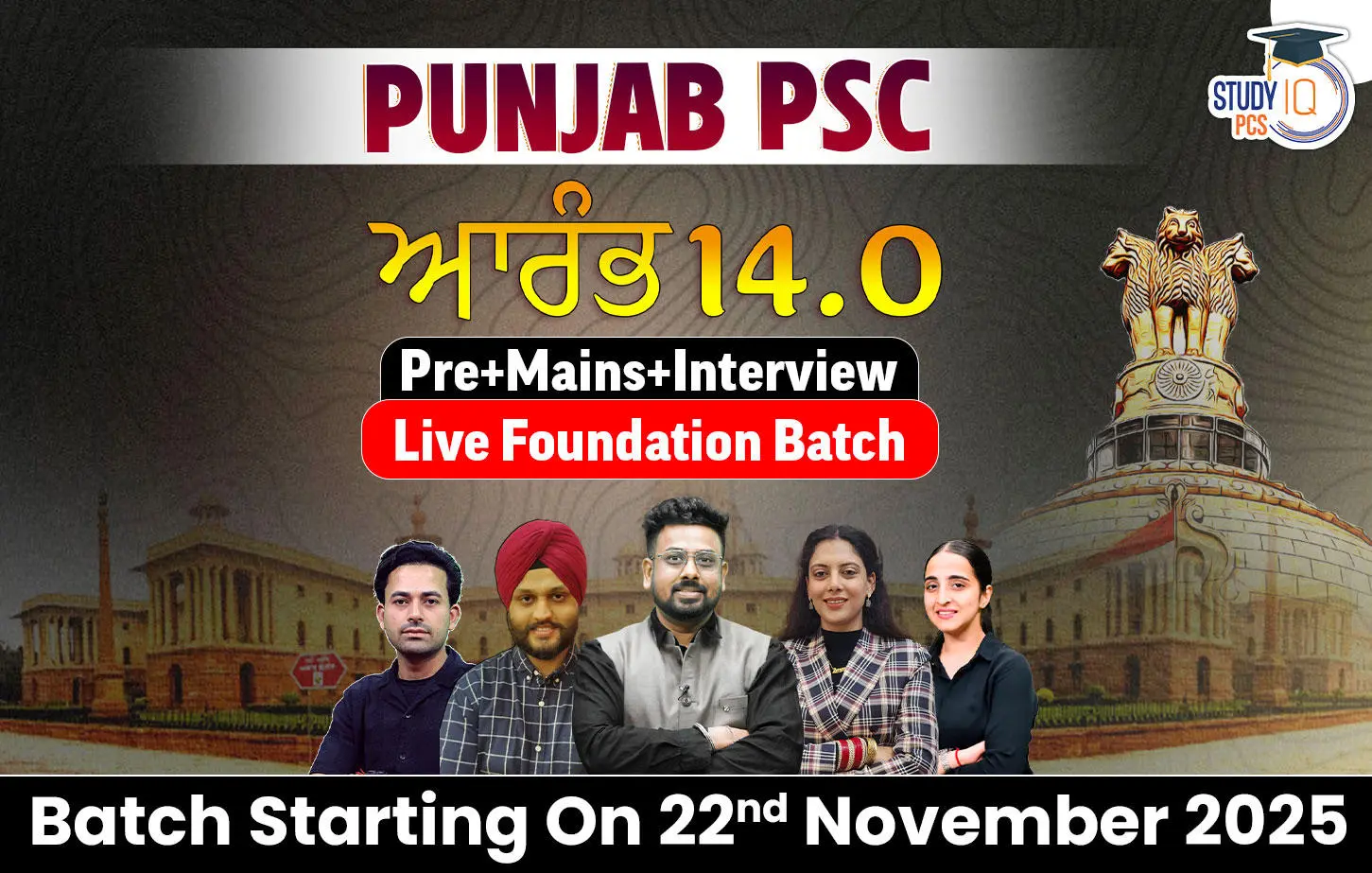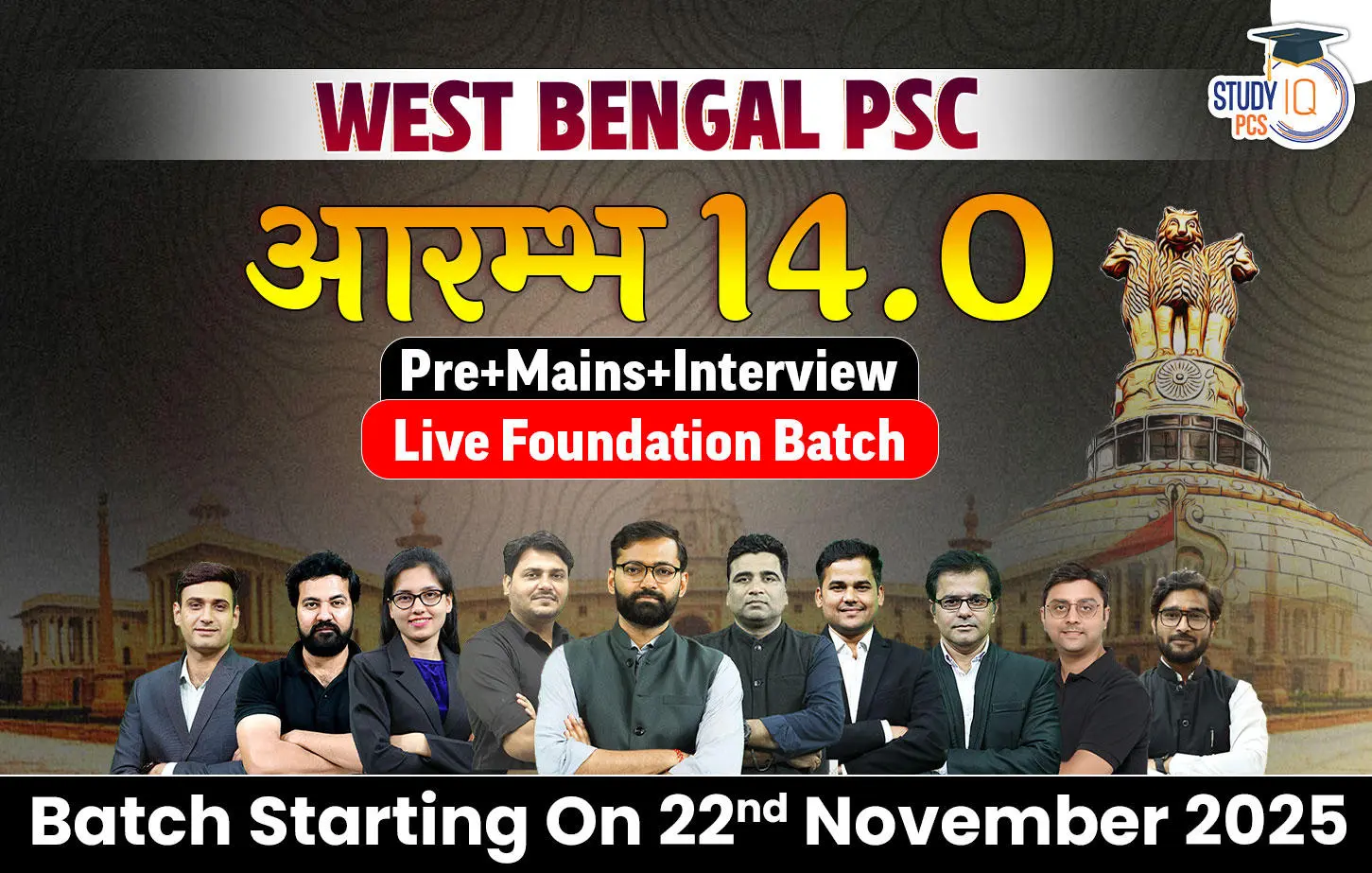The Uttar Pradesh Public Service Commission (UPPSC) successfully conducted the Review Officer (RO) / Assistant Review Officer (ARO) Preliminary Exam 2025 on 27 July 2025. Aspirants who appeared in the exam can now download the UPPSC RO/ARO Question Paper 2025 with Explanation PDF, prepared by subject-matter experts at StudyIQ. This question paper PDF not only includes all the questions asked in the exam but also provides comprehensive and well-structured explanations to help aspirants evaluate their performance and understand the concepts behind each question.
This is an excellent opportunity for candidates to cross-check their answers and get a clearer understanding of the UPPSC RO/ARO exam pattern, difficulty level, and expected cut-off trends.
- Which one of the following separates Tasmania from mainland Australia?
(a) Great Australian Bight
(b) Bass Strait
(c) Magellan Strait
(d) Tasman Sea
Answer: B
Explanation:
- The Bass Strait is a sea strait separating Tasmania from the south of the Australian mainland.
- It lies between Victoria (mainland Australia) and Tasmania.
- The Great Australian Bight is a large open bay off the southern coast.
- The Magellan Strait is in South America.
- The Tasman Sea lies between Australia and New Zealand.
- Consider the following statements about world population:
I. Brazil has the highest population among South American countries.
II. Asia has the highest population growth rate.
III. Africa is the most densely populated continent in the world.
Which of the above statements is/are correct?
(a) I and III only
(b) Only II
(c) I and II only
(d) Only I
Answer: D
Explanation:
- Statement I is correct: Brazil has the highest population in South America.
- Statement II is incorrect: Africa currently has the highest population growth rate, not Asia.
- Statement III is incorrect: Asia is the most densely populated continent, not Africa.
- Which one of the following pairs is not correctly matched?
| Plantation Crop | Country |
| (a) Coffee | Uzbekistan |
| (b) Rubber | Malaysia |
| (c) Tea | Sri Lanka |
| (d) Cocoa | Nigeria |
Answer: A
Explanation:
- Coffee is not a plantation crop of Uzbekistan, which has a dry climate unsuitable for coffee.
- Rubber is widely grown in Malaysia.
- Sri Lanka is known globally for its tea plantations.
- Cocoa is cultivated in Nigeria as a major export crop.
- Which of the following commodities has the greatest share in Indian exports?
(a) Agricultural products
(b) Mineral ores
(c) Handicrafts
(d) Engineering goods
Answer: D
Explanation:
- Engineering goods constitute the largest share in India’s merchandise exports.
- They include automobiles, industrial machinery, and electronic goods.
- They have surpassed traditional exports like textiles and agriculture.
- India exports engineering goods to major markets like the US, UAE, and EU.
- Which one of the following pairs (Folk dance – State of origin) is not correctly matched?
(a) Yakshagana – Rajasthan
(b) Kaikottikali – Kerala
(c) Koli – Maharashtra
(d) Himachali – Kullu Valley
Answer: A
Explanation:
- Yakshagana is a traditional dance-drama form of Karnataka, not Rajasthan.
- Kaikottikali is a folk dance of Kerala performed by women during Onam.
- Koli is a dance of Maharashtra’s fishing community.
- Himachali folk dance is performed in Kullu Valley.
- Deficiency of which of the following elements causes yellowing and poor growth in plants?
(a) Boron
(b) Phosphorus
(c) Calcium
(d) Nitrogen
Answer: D
Explanation:
Nitrogen deficiency causes yellowing of leaves (chlorosis) and poor plant growth.
It is essential for chlorophyll formation and protein synthesis.
Boron affects flower and seed development.
Phosphorus deficiency causes dark or purplish leaves.
Calcium deficiency affects root and shoot development.
- Match List-I with List-II and select the correct answer using the codes given below:
| List-I (Buddhist Text) | List-II (Content) |
| A. Vinaya Pitaka | i. Regional histories of Buddhism |
| B. Sutta Pitaka | ii. Buddha’s teachings |
| C. Abhidhamma Pitaka | iii. Rules for monks and nuns |
| D. Mahavamsa | iv. Philosophical matters |
Codes:
(a) A-iii, B-ii, C-iv, D-i
(b) A-iv, B-iii, C-i, D-ii
(c) A-ii, B-iv, C-iii, D-i
(d) A-iii, B-iv, C-i, D-ii
Answer: A
Explanation:
Vinaya Pitaka contains rules and regulations for monks and nuns (monastic discipline).
Sutta Pitaka comprises the discourses and teachings of Buddha.
Abhidhamma Pitaka deals with the philosophical and psychological analysis of Buddhist doctrine.
Mahavamsa is a historical chronicle of Buddhism in Sri Lanka.
- Which of the following is not a Rabi pulse crop?
(a) French bean
(b) Chickpea
(c) Green gram
(d) Lentil
Answer: C
Explanation:
Green gram (moong) is a Kharif crop grown in monsoon season.
Chickpea, French bean, and lentil are typically grown as Rabi pulses in winter.
Rabi crops are sown in October–November and harvested in March–April.
- Ashish leaves his house at 6:40 AM and reaches Kunal’s house in 25 minutes. They finish breakfast in 15 minutes and take another 35 minutes to reach their office.
At what time do they leave Kunal’s house to go to the office?
(a) 8:15 AM
(b) 7:20 AM
(c) 7:45 AM
(d) 7:40 AM
Answer: B
Explanation:
Ashish leaves his house at 6:40 AM and reaches Kunal’s house at 7:05 AM (after 25 minutes).
They have breakfast for 15 minutes, finishing at 7:20 AM.
Hence, they leave for the office at 7:20 AM.
- Find the missing number in the following pattern:

- 641
- 542
- 529
- 639
Answer: C
- The final match of the World Chess Championship 2024 was played between:
(a) Ding Liren and D. Gukesh
(b) Viswanathan Anand and D. Gukesh
(c) Magnus Carlsen and Vladimir Kramnik
(d) Ding Liren and Vladimir Kramnik
Answer: A
Explanation: Gukesh became the youngest challenger for the World Chess title in 2024.
He faced Ding Liren, the reigning world champion from China.
The match marked a historic moment for Indian chess.
- A family consists of six members: P, Q, R, S, T, and U. There are two married couples. Q is a doctor and the father of T. U is the grandfather of R and is a contractor. S is the grandmother of T and is a housewife. There is one doctor, one contractor, one nurse, one housewife, and two students. Which of the following is definitely a group of male members?
(a) U, T
(b) Q, U
(c) Q, U, P
(d) Q, T
Answer: D
Explanation:
Q is the father of T, and both are male.
U is the grandfather, also male, but not grouped definitively with Q in all options.
S is a grandmother (female), and R and P’s genders are not clearly defined.
So, only Q and T are definitely male.
- Introducing Shyam, a lady said: “The father of his father-in-law is my father-in-law.”
How is Shyam related to the lady?
(a) Father
(b) Husband
(c) Son-in-law
(d) Son
Answer: C
Explanation:
The lady says: “The father of his father-in-law is my father-in-law.”
That means Shyam’s wife’s grandfather is her father-in-law.
Thus, she is the mother-in-law of Shyam.
So, Shyam is her son-in-law.
- Which international sports event was held in the United Kingdom for the first time in 2025, featuring teams from India and other countries?
(a) Badminton World Championship
(b) Kabaddi World Cup
(c) Hockey World Cup
(d) Cricket World Cup
Answer: B
Explanation:
The Kabaddi World Cup 2025 was hosted in the United Kingdom for the first time.
It featured teams from India, Pakistan, Iran, and other countries.
The event aimed to popularize the traditional Indian sport globally.
- The 2024 Nobel Prize in Physiology or Medicine was awarded to Victor Ambros and Gary Ruvkun for the discovery of:
(a) Messenger RNA
(b) Ribosomal RNA
(c) Transfer RNA
(d) Micro RNAs
Answer: D
Explanation:
Victor Ambros and Gary Ruvkun were awarded the Nobel Prize for discovering microRNAs.
These are short RNA molecules that regulate gene expression post-transcriptionally.
Their discovery has deepened the understanding of gene regulation, development, and disease.
- In which country was the world’s largest offshore wind farm inaugurated in August 2024?
(a) Germany
(b) Denmark
(c) Taiwan
(d) United Kingdom
Answer: D
Explanation:
The world’s largest offshore wind farm, Dogger Bank, was inaugurated in the UK in August 2024.
It is located off the coast of Yorkshire in the North Sea.
Once fully operational, it will power millions of homes and significantly boost the UK’s green energy output.
Germany, Denmark, and Taiwan also have large offshore wind projects, but none surpass Dogger Bank in capacity.
- In March 2025, NASA astronauts Butch Wilmore and Sunita Williams returned to Earth on board SpaceX’s spacecraft named:
(a) Challenger
(b) Dragon
(c) Columbia
(d) Discovery
Answer: B
Explanation:
NASA astronauts Sunita Williams and Butch Wilmore returned in SpaceX’s Crew Dragon spacecraft.
The mission marked a significant achievement for commercial crew flights.
Challenger, Columbia, and Discovery were previous NASA space shuttles, not current operational spacecraft.
- In the 2024 Paris Olympics, the bronze medal in the men’s freestyle 57 kg wrestling event was won by:
(a) D.T. Cruz
(b) Sarabjot Singh
(c) Akshdeep Singh
(d) Aman Sehrawat
Answer: D
Explanation:
Indian wrestler Aman Sehrawat won the bronze medal in the men’s freestyle 57 kg category at the Paris 2024 Olympics.
It was a major milestone in his young career and contributed to India’s overall Olympic medal tally.
- What is the name of India’s first manned deep ocean mission?
(a) Vikramaditya
(b) Samudrayaan
(c) Varunayaan
(d) DIVE India
Answer: B
Explanation:
Samudrayaan is India’s first manned deep-sea mission, launched by NIOT (National Institute of Ocean Technology).
It aims to explore polymetallic nodules and study deep-sea biodiversity at depths of up to 6000 meters.
The vehicle used is called MATSYA 6000.
- Which city will host the 2026 Commonwealth Games?
(a) Glasgow
(b) Birmingham
(c) Hamilton
(d) Melbourne
Answer: A
Explanation:
After initial withdrawals, Glasgow (Scotland) was selected as the host city for the 2026 Commonwealth Games.
Melbourne and other previous hosts opted out due to rising costs.
The UK stepped in to ensure the continuity of the games.
- Which of the following pairs (State – Name of Coalfield) is not correctly matched?
(a) Odisha – Talcher
(b) Madhya Pradesh – Singareni
(c) Chhattisgarh – Korba
(d) Maharashtra – Wardha Valley
Answer: B
Explanation:
Singareni coalfields are located in Telangana, not Madhya Pradesh.
Talcher (Odisha), Korba (Chhattisgarh), and Wardha Valley (Maharashtra) are correctly matched coalfields.
- Which of the following pairs (Port – Feature) is not correctly matched?
(a) Tuticorin – Fishing Harbour
(b) Chennai – Artificial Harbour
(c) Kolkata – Deepest Harbour of India
(d) Visakhapatnam – Natural Harbour
Answer: C
Explanation:
Kolkata Port is a riverine port, not the deepest.
The deepest natural port in India is Visakhapatnam.
Chennai is an artificial port, Tuticorin is known for fishing, and Visakhapatnam is a natural harbour.
- Match List-I with List-II and select the correct answer using the codes given below:
| List-I (Biosphere Reserve) | List-II (State) |
| A. Manas | i. Assam |
| B. Similipal | ii. Odisha |
| C. Agasthyamalai | iii. Kerala |
| D. Nokrek | iv. Meghalaya |
Codes:
(a) A-ii, B-iii, C-iv, D-i
(b) A-i, B-ii, C-iii, D-iv
(c) A-iv, B-iii, C-ii, D-i
(d) A-iv, B-ii, C-iii, D-i
Answer: C
Explanation:
Manas → Assam (A-i)
Similipal → Odisha (B-ii)
Agasthyamalai → Kerala (C-iii)
Nokrek → Meghalaya (D-iv)
All are recognized biosphere reserves under UNESCO’s MAB program.
- Vinod Dham, Padma Bhushan awardee in 2025 for Science and Engineering, is known for his role in the development of:
(a) The Pentium Chip
(b) RISC Computing
(c) ZiLOG Processors
(d) SPARC Systems
Answer: A
Explanation:
Vinod Dham is popularly known as the “Father of the Pentium Chip”.
He played a pivotal role in Intel’s development of microprocessors.
His work laid the foundation for the computing revolution in the 1990s.
- India’s Chandrayaan-3 made a successful soft landing on the Moon, making India the ____ country to achieve this feat.
(a) Second
(b) Third
(c) Fourth
(d) None of the above
Answer: C
Explanation:
India became the 4th country (after the US, USSR/Russia, and China) to achieve a soft landing on the Moon.
Chandrayaan-3 landed on the Moon’s south pole region in August 2023.
It made India the first country to land near the lunar south pole.
- The Lok Sabha Elections 2024 were held in how many phases?
(a) 9 phases
(b) 7 phases
(c) 8 phases
(d) 6 phases
Answer: B
Explanation:
The 2024 Lok Sabha elections were conducted in 7 phases, from April to June 2024.
This phased voting ensures better deployment of security and polling personnel across regions.
- In 2025, how many individuals were honoured with the Padma Vibhushan award?
(a) 6
(b) 5
(c) 7
(d) 4
Answer: C
Explanation:
7 individuals were awarded the Padma Vibhushan, India’s second-highest civilian award, in 2025.
They included personalities from art, literature, science, and public service.
- Which one of the following is an Export Processing Zone (EPZ)?
(a) Bengaluru
(b) Delhi
(c) Kanpur
(d) Falta SEZ
Answer: D
Explanation:
Falta Special Economic Zone (SEZ) in West Bengal was one of the earliest Export Processing Zones in India.
It facilitates export-oriented industrial development.
Bengaluru, Delhi, and Kanpur are major cities but not designated EPZs.
- When was the ‘Zero Poverty Campaign’ launched by the Government of Uttar Pradesh?
(a) 26 January 2025
(b) 2 October 2024
(c) 26 January 2024
(d) 15 August 2024
Answer: B
Explanation:
The Zero Poverty Campaign was launched on 2 October 2024, coinciding with Gandhi Jayanti.
It focuses on eradicating extreme poverty through targeted welfare, employment, and health schemes.
- Which initiative was launched by the Government of India to promote climate-friendly lifestyle choices among citizens?
(a) Green India Mission
(b) Mission LiFE
(c) Swachh Bharat Abhiyan
(d) National Mission for Clean Ganga
Answer: B
Explanation:
Mission LiFE (Lifestyle for Environment) was launched to encourage sustainable and eco-conscious behaviour.
It was introduced by Prime Minister Narendra Modi at the COP26 summit.
The mission urges individuals to adopt climate-responsible daily habits.
- Who among the following received the Major Dhyan Chand Khel Ratna Award 2024?
(a) Sukhjeet Singh
(b) Annu Rani
(c) Vantika Agrawal
(d) D. Gukesh
Answer: D
Explanation:
Chess prodigy D. Gukesh was awarded the Major Dhyan Chand Khel Ratna in 2024.
He became the youngest Indian to challenge for the World Chess Championship.
This award is India’s highest sporting honour, given for outstanding performance over four years.
- Which of the following are water-soluble vitamins?
(a) Vitamins C and D
(b) Vitamins B and D
(c) Vitamins B and C
(d) Vitamins A and B
Answer: C
Explanation:
Vitamins B-complex and C are water-soluble, meaning they dissolve in water and are not stored in the body.
They need to be consumed regularly through diet.
Vitamins A, D, E, and K are fat-soluble.
- Given below are two statements — one labelled as Assertion (A) and the other as Reason (R):
Assertion (A): Amphibians can tolerate the mixing of oxygenated and deoxygenated blood.
Reason (R): Amphibians are animals with a two-chambered heart.
Select the correct answer using the codes below:
(a) Assertion (A) is false, but Reason (R) is true.
(b) Both Assertion (A) and Reason (R) are true, but Reason (R) is not the correct explanation of Assertion (A).
(c) Assertion (A) is true, but Reason (R) is false.
(d) Both Assertion (A) and Reason (R) are true, and Reason (R) is the correct explanation of Assertion (A).
Answer: C
Explanation:
Amphibians have a three-chambered heart, not two.
This structure allows partial mixing of oxygenated and deoxygenated blood.
Thus, Assertion is true, but the Reason is incorrect.
- Which part of the brain is known as the “little brain”?
(a) Medulla
(b) Cerebellum
(c) Pons
(d) Cerebrum
Answer: B
Explanation:
The cerebellum is called the “little brain” due to its structure and function.
It coordinates balance, posture, and motor control.
It lies below the cerebrum and behind the brainstem.
- ‘Knock-Knee’ Syndrome is caused due to the pollution of:
(a) Phosphates
(b) Fluorides
(c) Nitrates
(d) Heavy metals
Answer: B
Explanation:
Excessive fluoride intake, especially through drinking water, causes skeletal fluorosis, leading to knock-knees.
The condition results in bone deformities, especially in children.
- Blood is a type of:
(a) Connective tissue
(b) Muscular tissue
(c) Nervous tissue
(d) Epithelial tissue
Answer: A
Explanation:
Blood is classified as a fluid connective tissue.
It connects different body parts by transporting nutrients, gases, and wastes.
It has a liquid matrix called plasma and cellular components like RBCs, WBCs, and platelets.
- Which of the following was not one of the states annexed by Lord Dalhousie under the Doctrine of Lapse?
(a) Karnataka
(b) Nagpur
(c) Jhansi
(d) Satara
Answer: A
Explanation:
Karnataka was not annexed under the Doctrine of Lapse.
Satara, Jhansi, and Nagpur were annexed because their rulers died without a male heir.
This controversial policy led to widespread resentment.
- Who was the Governor-General and Viceroy of India at the time of the formation of the Indian National Congress?
(a) Lord Curzon
(b) Lord Dufferin
(c) Lord Lansdowne
(d) Lord Ripon
Answer: B
Explanation:
Lord Dufferin was the Viceroy when the Indian National Congress was founded in 1885.
He initially supported the Congress but later distanced the British administration from its political activities.
- Who presided over the first session of the All India Trade Union Congress (AITUC) at Bombay?
(a) N.M. Joshi
(b) Lala Lajpat Rai
(c) B. Shiva Rao
(d) S.A. Dange
Answer: B
Explanation:
Lala Lajpat Rai presided over the first session of AITUC in 1920 at Bombay.
It was a milestone in India’s labour movement and led to the rise of organized trade unionism.
- Who established the Central Hindu College in Banaras, which later became the nucleus of Banaras Hindu University (BHU)?
(a) Swami Dayanand
(b) Bal Gangadhar Tilak
(c) Annie Besant
(d) Madan Mohan Malaviya
Answer: C
Explanation:
Annie Besant founded the Central Hindu College in 1898.
It later became part of Banaras Hindu University (BHU), established by Madan Mohan Malaviya.
- Where was the first session of the Indian National Congress held?
(a) Lahore
(b) Bombay
(c) Poona
(d) Calcutta
Answer: B
Explanation:
The first session of the Indian National Congress was held in Bombay (Mumbai) in 1885.
It was presided over by W.C. Bonnerjee and attended by 72 delegates.
- In which year was the Uttar Pradesh State Organic Certification Agency established?
(a) 2007
(b) 2011
(c) 2005
(d) 2013
Answer: A
Explanation:
The Uttar Pradesh State Organic Certification Agency (UPSOCA) was established in 2007.
It certifies organic produce and supports organic farming initiatives in the state.
- Which cash crop is the major contributor to the agricultural economy of Uttar Pradesh?
(a) Maize
(b) Cotton
(c) Sugarcane
(d) Wheat
Answer: C
Explanation:
Sugarcane is the major cash crop of Uttar Pradesh.
The state is India’s largest producer of sugarcane and has a large number of sugar mills.
- The “Operation Kayakalp” scheme launched in Uttar Pradesh is related to:
(a) Expanding university infrastructure
(b) Revamping primary schools
(c) Promoting skill-based education
(d) Improving higher education
Answer: B
Explanation:
Operation Kayakalp is a scheme by the Uttar Pradesh government to upgrade infrastructure and hygiene in government primary schools.
It includes provisions for clean toilets, drinking water, furniture, and smart classrooms.
- In 2023–24, which state was the leading producer of food grains in India?
(a) Maharashtra
(b) Madhya Pradesh
(c) Uttar Pradesh
(d) Punjab
Answer: C
Explanation:
Uttar Pradesh remained the top producer of food grains in India in 2023–24.
Major crops include wheat, rice, and sugarcane.
Its fertile Gangetic plains contribute significantly to national food production.
- When was the ‘Kisan Mitra Yojana’ started in Uttar Pradesh?
(a) 18 June 2010
(b) 18 August 2001
(c) 18 June 2001
(d) 18 August 2010
Answer: C
Explanation:
- ‘Kisan Mitra Yojana’ was initiated on 18 June 2001 by the Uttar Pradesh government to provide agricultural advisory services to farmers through designated “Kisan Mitras”.
- The scheme aims to bridge the gap between the agriculture department and farmers at the block level.
Additional Info:
- It focuses on disseminating knowledge of cropping patterns, fertilizers, irrigation, and weather conditions.
- Consider the following pattern:

What is the missing number?
(a) 10
(b) 8
(c) 9
(d) 6
Answer: A
- What was the Fiscal Health Index of Uttar Pradesh in the year 2022–23?
(a) 45.9
(b) 37.0
(c) 35.0
(d) 47.9
Answer: A
Explanation:
- The RBI’s ‘State Finances: A Study of Budgets’ and independent reports ranked Uttar Pradesh with a Fiscal Health Index of 45.9.
- The index considers debt sustainability, revenue performance, and expenditure quality.
Additional Info:
- Other high-performing states: Maharashtra (74.3), Gujarat, and Karnataka.
- Fiscal deficit and debt burden heavily impact this index.
- Which of the following is an ocean current of the Atlantic Ocean?
(a) Humboldt Current
(b) California Current
(c) Alaska Current
(d) Benguela Current
Answer: D
Explanation:
- Benguela Current is a cold ocean current flowing along the southwestern coast of Africa in the South Atlantic Ocean.
- Others listed:
- Humboldt (a): Pacific (Peru-Chile)
- California Current (b): Pacific
- Alaska Current (c): Pacific
- Which one of the following states recorded the maximum decadal growth of urban population during 2001–2011?
(a) Maharashtra
(b) Nagaland
(c) Kerala
(d) Sikkim
Answer: B
Explanation:
- Nagaland saw highest urban growth due to:
- Reclassification of rural areas into urban towns
- Rapid migration to small urban clusters
- Growth Rate: ~67.1% (2001–2011 Census
- Which river originates from Mansarovar in Tibet and passes through the Shipki La mountain pass?
(a) Chenab
(b) Beas
(c) Ravi
(d) Satluj
Answer: D
Explanation:
- Satluj River:
- Origin: Rakshastal near Mansarovar Lake (Tibet)
- Enters India via Shipki La Pass (Himachal Pradesh)
- Other rivers listed originate in India or elsewhere.
- The famous Brahma Temple of Pushkar is located in which state?
(a) Rajasthan
(b) Uttar Pradesh
(c) Gujarat
(d) Himachal Pradesh
Answer: A
Explanation:
- The only prominent temple dedicated to Lord Brahma is in Pushkar (Ajmer District), Rajasthan.
- Built in 14th century with red spire and distinct architecture.
- Arrange the following states in ascending order based on the percentage of tribal population as per Census 2011:
I. Madhya Pradesh
II. Maharashtra
III. Rajasthan
IV. Meghalaya
Options:
(a) IV, I, II, III
(b) III, IV, I, II
(c) II, III, I, IV
(d) I, II, III, IV
Answer: C
Explanation:
- Tribal population %:
- Maharashtra – ~9.4%
- Rajasthan – ~13.5%
- Madhya Pradesh – ~21.1%
- Meghalaya – ~86.1%
- Hence: Maharashtra < Rajasthan < MP < Meghalaya
- Which state was the most urbanised as per Census 2011?
(a) Gujarat
(b) Goa
(c) Tamil Nadu
(d) Maharashtra
Answer: B
Explanation:
- Goa had urban population of ~62.17%, the highest among Indian states (not UTs).
- Others:
- Tamil Nadu: ~48.4%
- Maharashtra: ~45.2%
- Gujarat: ~42.6%
- Match List-I with List-II:
| List-I (Ruler) | List-II (Title) |
| A. Kushanas | i. Devaputra |
| B. Pulakeshin II | ii. Dakshinapatheshwara |
| C. Harshavardhana | iii. Sakalottarapathanatha |
| D. Samudragupta | iv. Kaviraj |
Codes:
(a) A-i, B-iii, C-ii, D-iv
(b) A-ii, B-i, C-iii, D-iv
(c) A-iii, B-iv, C-ii, D-i
(d) A-ii, B-iii, C-i, D-iv
Answer: A
Explanation:
- A. Kushanas – Devaputra (Son of God)
- B. Pulakeshin II – Sakalottarapathanatha (Lord of the North)
- C. Harshavardhana – Dakshinapatheshwara (Lord of South Path)
- D. Samudragupta – Kaviraj (King of Poets)
- Which of the following pairs is not correctly matched?
(a) Ryotwari System – Madras
(b) Permanent Settlement – Bengal
(c) Mahalwari System – North-West Provinces
(d) Taluqdari System – Bombay
Answer: D
Explanation:
- Taluqdari System was not in Bombay, but mainly in Oudh (Awadh) and Central India.
- Correct pairs:
- Ryotwari – Madras, Bombay
- Permanent Settlement – Bengal, Bihar
- Mahalwari – North-West Provinces
- As per the Udaipur Prashasti, which ruler was praised as having accomplished what others could not do?
(a) Sindhuraj
(b) Vakpati Munja
(c) Mihira Bhoja
(d) Bhoja
Answer: D
Explanation:
- Udaipur Prashasti (an inscription) praised Raja Bhoja for achievements beyond others’ capabilities.
- He was a Paramara ruler of Malwa, famed for culture, literature, and military.
- Which king stated that:
“All our people should create good deeds, be free from disasters, and enjoy joy with minds unpolluted by jealousy”?
(a) Samudragupta
(b) Chandragupta Maurya
(c) Harshavardhana
(d) Ashoka
Answer: D
Explanation:
- This is from Ashoka’s Dhamma edicts, promoting:
- Moral behavior
- Non-violence
- Tolerance
- His inscriptions emphasize peace, welfare, and ethical governance.
- Find the missing number:

(a) 86
(b) 76
(c) 67
(d) 55
Answer: B
- In a code language:
“tob iso har” means Tobacco is harmful “avo har hab” means Avoid harmful habit “ple avo tab” means Please avoid tobacco What is the code for the word “habit”?
(a) tob
(b) hab
(c) avo
(d) har
Answer: B
Explanation:
- From sentence:
- “avo har hab” = “Avoid harmful habit”
- Match “habit” with the only unique code here: hab
- Cross-check:
- “avo” – Appears in both sentence 2 & 3 → “Avoid”
- “har” – Appears in 1 & 2 → “Harmful”
- Remaining “hab” → “Habit”
- In a queue of boys, A is seventh from the left and B is fourth from the right. When A and B interchange their positions, then A becomes fifteenth from the left. Find the position of B from the right.
(a) 19th
(b) 12th
(c) 20th
(d) 17th
Answer: B
Explanation:
- A is 7th from the left. After interchanging with B, A becomes 15th from the left.
- So, B’s original position = 15th from the left.
- Total boys = 15 + (4 – 1) = 18
- B’s new position from the right = 18 – 6 = 12th
- Find the value of x,
if2* 3 =11,
3 * 5 = 23,
and x * 6 = 41.
(a) 6
(b) 4
(c) 5
(d) 3
Answer: C
Explanation:
- Pattern:
- 2 * 3 = (2 × 3) + 5 = 6 + 5 = 11
- 3 * 5 = (3 × 5) + 8 = 15 + 8 = 23
- So, x * 6 = (x × 6) + (11) = 41
- x × 6 = 30 → x = 5
- A bag contains 7 5, 2 and 7 1 coins in the ratio of
3: 4: 5. The total value of all the coins is € 2,100. How many coins of & 5 are there in the bag?
(a) 250
(b) 225
(c) 245
(d) 210
Answer: B
Explanation:
- Ratio = 3:4:5 → Total parts = 12
- Let common multiple = x
- Value: 5×3x + 2×4x + 1×5x = 15x + 8x + 5x = 28x
- 28x = 2100 → x = 75
- Coins of ₹5 = 3x = 3 × 75 = 225
- Match List-I with List-II and choose the correct answer using the codes given below :
List-I List-II
(Natural Source) (Acid)
- Vinegar i. Methanoic acid
- Tamarind ii. Lactic acid
- Sour milk (curd) iii. Acetic acid
- Nettle sting iv. Tartaric acid
Codes :
(a) A-iv, B-i, C-iii, D-ii
(b) A-iii, B-iv, C-ii, D-i
(c) A-i, B-ill, C-iv, D-ii
(d) A-ii, B-iii, C-iv, D-i
Answer: B
Explanation:
- A. Vinegar – Acetic acid (iii)
- B. Tamarind – Tartaric acid (iv)
- C. Sour milk – Lactic acid (ii)
- D. Nettle sting – Methanoic acid (i)
- What is ‘Hydroponics’ ?
(a) Soil conservation
(b) Grafting a plant
(c) Study of vegetables
(d) Growing a plant withoyt soil
Answer: D
Explanation:
- Hydroponics is a method of growing plants using nutrient-rich water without soil.
- Roots are supported by materials like rock wool or perlite.
- Given below are two Statements, one is labelled as Assertion (A) and other is labelled as Reason (R).
Assertion (A) : In photosynthesis, the radiation energy of sunlight is converted into chemical energy and stored in food materials.
Reason (R) : The final product of photosynthesis is glucose sugar, which soon turns into starch.
Select the correct answer using the codes given below
Answer: A
Explanation:
- Assertion is correct: Sunlight’s energy is stored as chemical energy in food.
- Reason is correct: Glucose is the product, later converted to starch.
- Reason explains Assertion → Correct Answer: A
- When did the Anti-Partition Movement begin with a massive demonstration at the Town Hall, Calcutta ?
(a) 16th October, 1905
(b) 7th August, 1905
(c) 16th August, 1905
(d) Sth August, 1905
Answer: A
Explanation:
- Partition of Bengal effective from 16 October 1905.
- Same day observed as ‘Raksha Bandhan’ & unity day by nationalists in Calcutta.
- On defeating which politician, did Subhas Chandra Bose become the President of the Indian National Congress?
(a) C. Rajagopalachari
(b) Sardar Patel
(c) Pattabhi Sitaramayya
(d) Jawaharlal Nehru
Answer: C
Explanation:
- Subhas Chandra Bose defeated Pattabhi Sitaramayya in the 1939 Tripuri Session of the INC.
- Gandhi had backed Sitaramayya, and his defeat was seen as a blow to Gandhi’s influence in the party.
- Bose’s victory highlighted ideological differences within the Congress.
- Which of the following countries did not recognize the Azad Hind Government ?
(a) Philippines
(b) Indonesia
(c) Italy
(d) Germany
Answer: B
Explanation:
- The Azad Hind Government, established by Subhas Chandra Bose in 1943 in Singapore, was recognized by Axis powers.
- Recognizing countries included Germany, Italy, Japan, Philippines, and others.
- Indonesia did not officially recognize it as it was still under Dutch and later Japanese control.
- Match List-I with List-II and choose the correct answer using the codes given below :
List-I List-II
- Jat Rebellion i. 1554 A.D.
- Bundela Rebellion ii. 1672 A.D
- Satnami Rebellion iii. 1669 A.D.
- Sikh Rebellion iv. 1675 A.D.
Codes :
(a) A-i, B-ii, C-iv, D-iii
(b) A-ii, B-iv, C-i, D-iii
(c) A-iv, B-iii, C-ii, D-i
(d) A-iii, B-i, C-ii, D-iv
Answer: D
Explanation:
- Jat Rebellion → 1669 A.D. (A-iii)
- Bundela Rebellion → 1554 A.D. (B-i)
- Satnami Rebellion → 1672 A.D. (C-ii)
- Sikh Rebellion → 1675 A.D. (D-iv)
- In which session of the Congress was the “Purna Swaraj” resolution passed ?
(a) Madras session
(b) Lahore session
(c) Lucknow session
(d) Calcutta session
Answer: B
Explanation:
- The Purna Swaraj (complete independence) resolution was passed in the Lahore Session of 1929, presided over by Jawaharlal Nehru.
- 26th January 1930 was declared as Independence Day.
- It marked a radical shift from dominion status to full independence.
72 ranks first in India in terms of 72 production?
(a) Papaya
(b) Mango
(c) Guava
(d) Banana
Answer: D
Explanation:
- India is the largest producer of bananas in the world.
- Major banana-producing states include Tamil Nadu, Maharashtra, Gujarat, and Andhra Pradesh.
- It contributes over 30% to India’s total fruit production.
- ‘Kisan Call Centre’ was started by
(a) NABARD
(b) ICAR
(c) State Agricultural University
(d) Agriculture and Farmers Welfare, Government of India
Answer: D
Explanation:
- Kisan Call Centre (KCC) scheme was launched in 2004 by the Ministry of Agriculture and Farmers Welfare.
- It offers agricultural advice to farmers in their local language through a toll-free number: 1800-180-1551.
- Which of the following belongs to cash crops?
- Potato
- Rice
- III. Sugarcane
- Cotton
- Rapeseed
Select the correct answer from the codes given below :
(a) III, IV ande V
(b) I, II and
(c) I, III and V
(d) I, II and IV
Answer: C
Explanation:
- Cash crops are grown for sale rather than consumption.
- Potato (I), Sugarcane (III), and Rapeseed (V) are considered cash crops.
- Rice and other food grains are staple/food crops.
- Match List-I with List-II and choose the correct answer using the codes given below :
List-I List-Il
(Crops) (Diseases)
- Paddy i.Wilt disease
- Wheat ii. Black Rust
- Sugarcaneo iii. Red Rot
- Pigeon Pea iv. Brown leaf spot
Codes:
(a) A-iv, B-ii, C-iii, D-i
(b) A-i, B-iii, C-ii, D-iv
(c) A-iii, B-i, C-ii, D-iv
(d) A-ii, B-iii, C-iv, D-i
Answer: A
Explanation:
- Paddy → Brown leaf spot (A-iv)
- Wheat → Black Rust (B-ii)
- Sugarcane → Red Rot (C-iii)
- Pigeon Pea (Tur) → Wilt disease (D-i)
- Which of the following pairs (Fat – Oil) is not correctly matched ?
(a) Mineral oil – Petroleum
(b) Vegetable fats – Phytosterol
(c) Mustard oil – Lubricant
(d) Animal fats – Cholesterol
Answer: C
Explanation:
- Mustard oil is used for cooking and massage but not as an industrial lubricant.
- Mineral oil comes from petroleum and is a lubricant.
- Vegetable fats contain phytosterol; animal fats contain cholesterol.
- “Aqua Regia” is a mixture of which of the following?
(a) HCl and HF
(b) Concentrated HCl and Concentrated HINO
(c) HCl and HBr
(d) Concentrated HCl and Concentrated H, SO4
Answer: B
Explanation:
- Aqua Regia is a highly corrosive mixture of 3 parts hydrochloric acid (HCl) and 1 part nitric acid (HNO₃).
- It is used to dissolve noble metals like gold and platinum.
- The type of mirror used in the headlight of a car is :
(a) Plane convex mirror
(b) Concave mirror
(c) Plane mirror
(d) Convex mirror
Answer: B
Explanation:
- Concave mirrors are used in headlights as they focus light into a parallel beam, increasing visibility.
- They converge light rays coming from the bulb placed at their focus.
- Convex and plane mirrors are not suitable for this purpose.
- Which of the following is not a luminous object ?
(a) Flame of candle
(b) Moon
(c) Electric lamp
(d) Sun
Answer: B
Explanation:
- Luminous objects emit their own light (e.g., Sun, flame, electric lamp).
- The Moon does not emit its own light; it reflects sunlight, hence is non-luminous.
- The flame of a candle, the electric lamp, and the Sun are self-luminous sources.
- The distance at which the average radius of Earth’s orbit subtends an angle of 1 are second, is known as :
(a) 1 Fermi
(b) 1 astronomical unit
(c) 1 Parsec
(d) 1 light year
Answer: C
Explanation:
- 1 parsec (pc) is defined as the distance from which 1 astronomical unit subtends an angle of 1 arcsecond.
- It is a unit of distance used in astronomy.
- 1 parsec ≈ 3.26 light years.
- A fermi is a unit of nuclear scale distance; 1 AU is the average Earth-Sun distance.
- Which of the following is correct regarding the conversion of metre to nanometre?
(a) 1 metre = 10⁹ nanometres
(b) 1 metre = 10⁻⁹ nanometres
(c) 1 metre = 10⁷ nanometres
(d) None of the above
Answer: C
Explanation:
- 1 nanometre (nm) = 10⁻⁹ metre
- Therefore, 1 metre = 10⁹ nanometres
- This is a standard metric conversion used in physics and nanotechnology.
- Which of the following statements is/are correct regarding the Treaty of Lahore (1846)?
I. The Maharaja ceded all his territories beyond the River Satluj permanently.
II. The Maharaja gave up his rights over all forts between the Satluj and Beas rivers to the Company.
III. The English army was prohibited from passing through Sikh territories.
Select the correct answer using the codes below:
(a) Only II and III
(b) Only I and II
(c) I, II and III
(d) Only I
Answer: B
Explanation:
- Statement I is correct: The Maharaja ceded territories beyond the Satluj to the British.
- Statement II is correct: The Sikh ruler gave up control over forts between the Satluj and Beas.
- Statement III is incorrect: The treaty allowed, not prohibited, movement of the British army.
- Match List-I with List-II and choose the correct answer using the codes given below:
| List-I (Term) | List-II (Meaning) |
| A. Iqta | i. A portion |
| B. Mahrousa | ii. Land under state administration |
| C. Khalisa | iii. Land revenue |
| D. Shiq | iv. Protected town |
Codes:
(a) A-i, B-ii, C-iii, D-iv
(b) A-iii, B-i, C-iv, D-ii
(c) A-ii, B-i, C-iv, D-iii
(d) A-iii, B-iv, C-ii, D-i
Answer: D
Explanation:
- Iqta → Land revenue (iii)
- Mahrousa → Protected town (iv)
- Khalisa → Land under state administration (ii)
- Shiq → A portion (i)
- The phenomenon of “urban heat island” refers to:
(a) Decreased energy consumption
(b) Increased tree cover
(c) Higher temperatures in urban areas compared to nearby rural areas
(d) Decreased temperature in urban areas
Answer: C
Explanation:
- Urban Heat Island (UHI) occurs due to human activities, concrete structures, and reduced vegetation.
- Cities absorb and retain more heat than rural areas.
- It leads to local climate warming, especially at night.
- Biofertilizers are:
(a) Organic manures
(b) Cultures of micro-organisms
(c) Green manures
(d) None of the above
Answer: B
Explanation:
- Biofertilizers contain living microorganisms (e.g., Rhizobium, Azotobacter).
- They promote plant growth by increasing supply of nutrients (like nitrogen and phosphorus).
- They are not manure; rather, they aid in nutrient fixation biologically.
- Which of the following states has a higher number of females than males?
(a) Karnataka
(b) Tamil Nadu
(c) Kerala
(d) West Bengal
Answer: C
Explanation:
- Kerala has a sex ratio > 1000 (females per 1000 males), according to Census data.
- It has consistently recorded better gender indicators in health and literacy.
- Other states mentioned have sex ratios below 1000.
- When was the first Mineral Policy announced in the state of Uttar Pradesh?
(a) December 29, 1999
(b) December 29, 1996
(c) December 29, 1997
(d) December 29, 1998
Answer: D
Explanation:
- The first Mineral Policy of UP aimed to regulate mining activities and promote sustainable extraction.
- It was officially announced on 29th December 1998.
- Subsequent policies have followed this framework.
- Which website is used to monitor the financial activities of the Government of Uttar Pradesh?
(a) Arthashastra
(b) Srishti
(c) NIC
(d) Koshvani
Answer: D
Explanation:
- Koshvani is the official portal to track receipts, expenditures, and budget allocations of UP Govt.
- Developed by NIC, it ensures transparency in public finance.
- Other options are unrelated or general in nature.
- Who is the author of the book “The Population Bomb”?
(a) Thomas Malthus
(b) Paul R. Ehrlich
(c) Warren Thompson
(d) Donald Bogue
Answer: B
Explanation:
Paul R. Ehrlich authored the book The Population Bomb in 1968.
The book warned of mass starvation and environmental degradation due to overpopulation.
Thomas Malthus, an earlier economist, also warned of population growth, but in the 18th century.
Warren Thompson and Donald Bogue were demographers but not the authors of this book.
- Where is the National Institute of Agricultural Economics and Policy Research located?
(a) Lucknow
(b) New Delhi
(c) Hyderabad
(d) Mumbai
Answer: B
Explanation:
The National Institute of Agricultural Economics and Policy Research (NIAP) is located in New Delhi.
It works under the Indian Council of Agricultural Research (ICAR).
It focuses on agricultural policy research and economic analysis in India.
- Arrange the following events in chronological order:
I. Cabinet Mission
II. Cripps Mission
III. Quit India Movement
IV. Mountbatten Plan
Choose the correct sequence:
(a) I, II, III, IV
(b) II, III, I, IV
(c) III, II, I, IV
(d) II, I, III, IV
Answer: B
Explanation:
- Cripps Mission – 1942
III. Quit India Movement – 1942 (after Cripps Mission failed)
- Cabinet Mission – 1946
- Mountbatten Plan – 1947
Hence, correct chronological order is: Cripps Mission → Quit India → Cabinet Mission → Mountbatten Plan.
- Consider the following statements:
I. Badruddin Tyabji was the first Muslim President of the Indian National Congress.
II. Sarojini Naidu was the first woman President of the Indian National Congress.
Which of the statements is/are correct?
(a) Neither I nor II
(b) Only II
(c) Both I and II
(d) Only I
Answer: D
Explanation:
Statement I is correct: Badruddin Tyabji was the first Muslim President of INC in 1887.
Statement II is incorrect: Annie Besant was the first woman President of INC in 1917.
Sarojini Naidu was the first Indian woman to hold the post (1925).
- With reference to the Ajivika sect, which of the following statements is/are correct?
I. Ajivika followers mostly lived in forests.
II. The sect enjoyed great respect during the Mauryan period.
Select the correct answer using the codes below:
(a) Neither I nor II
(b) Only II
(c) Both I and II
(d) Only I
Answer: B
Explanation:
Statement I is incorrect: Ajivikas were not forest-dwellers by principle, they lived in urban and rural areas.
Statement II is correct: The Ajivika sect had prominence during the Mauryan period, especially under Bindusara.
Ajivikas believed in determinism (Niyati) and were rivals of Buddhists and Jains.
- In the following figure, what number will replace the missing value ‘x’?

(a) 120
(b) 16
(c) 29
(d) 18
Answer: A
- In a code language, ‘MISTAKE’ is written as ‘9765412’ and ‘NAKED’ is written as ‘84123’. How will ‘INTIMATE’ be written in that code?
(a) 78698365
(b) 78579452
(c) 79438163
(d) 897866145
Answer: B
Explanation:
Mapping of letters to digits:
M=9, I=7, S=6, T=5, A=4, K=1, E=2, N=8, D=3
So, I-N-T-I-M-A-T-E = 7-8-5-7-9-4-5-2 → 78579452
- Select the correct related word pair from the given alternatives:
Tuberculosis : Lungs :: Typhoid : ?
(a) Brain
(b) Intestine
(c) Lungs
(d) Kidney
Answer: B
Explanation:
Tuberculosis affects the lungs primarily.
Typhoid is caused by Salmonella typhi, which affects the intestines and digestive tract.
Hence, the correct analogy is Intestine.
- Which one of the following figures is different from the rest?

Answer: A
- The year 2036 will have the same calendar as which of the following years?
(a) 2009
(b) 2007
(c) 2008
(d) 2006
Answer: C
Explanation:
Calendar years repeat in cycles of 28 years (with leap year corrections).
2036 is a leap year, and the previous leap year with the same calendar is 2008.
Leap year calendars repeat every 28 years.
- Which of the following pairs is NOT correctly matched?
| Mountain Pass | State |
| (a) Sin La | Uttarakhand |
| (b) Nathu La | Sikkim |
| (c) Zoji La | Arunachal Pradesh |
| (d) Shipki La | Himachal Pradesh |
Answer: C
Explanation:
Zoji La is located in Ladakh (UT) and connects Srinagar to Leh.
Other pairs:
- Sin La – Uttarakhand
- Nathu La – Sikkim
- Shipki La – Himachal Pradesh
Thus, option (c) is mismatched.
- ‘Yela Mala’ is the name of which of the following hills?
(a) Shevaroy Hills
(b) Garo Hills
(c) Anaimalai Hills
(d) Cardamom Hills
Answer: D
Explanation:
Yela Mala is a regional name for Cardamom Hills, part of the southern Western Ghats in Kerala.
These hills are known for spice cultivation, especially cardamom and pepper.
Anaimalai, Garo, and Shevaroy are separate hill ranges.
- Which of the following pairs (Tree – Area) is NOT correctly matched?
(a) Sal – Northeastern parts of the Indian Peninsula
(b) Teak – Western part of the Indian Peninsula
(c) Deodar – Nilgiri Hills
(d) Sundari – Sundarbans Delta
Answer: C
Explanation:
- Sal is correctly associated with the northeastern parts of the Indian Peninsula (e.g., Chhattisgarh, Jharkhand, Odisha).
- Teak is native to the western and central parts of the Indian Peninsula, especially Madhya Pradesh and Maharashtra.
- Deodar is a Himalayan conifer found in Jammu & Kashmir, Himachal Pradesh, and Uttarakhand—not the Nilgiri Hills.
- Sundari is the dominant mangrove tree in the Sundarbans Delta.
- Which of the following is a local storm in Bengal and Assam that aids tea and rice cultivation?
(a) Karaburan
(b) Blossom shower
(c) Norwesters
(d) Mango shower
Answer: C
Explanation:
- Norwesters, locally called Kalbaisakhi, are violent thunderstorms common in Bengal and Assam during pre-monsoon months.
- They bring rainfall crucial for tea and rice cultivation.
- Karaburan is a cold wind in Central Asia.
- Blossom showers occur in Kerala and aid coffee plantations.
- Mango showers are common in Karnataka and help mango ripening.
- Which Union Territory had the highest literacy rate as per the 2011 Census?
(a) Andaman and Nicobar Islands
(b) Chandigarh
(c) Daman and Diu
(d) Lakshadweep
Answer: D
Explanation:
- Lakshadweep had a literacy rate of 91.85%, the highest among Union Territories in 2011.
- Chandigarh followed with 86.4%.
- Andaman & Nicobar had around 86.6%, while Daman and Diu had lower literacy levels.
- Plants that tolerate a wide range of temperatures throughout the year are called:
(a) Hekistothermal
(b) Eurythermal
(c) Microthermal
(d) Stenothermal
Answer: B
Explanation:
- Eurythermal organisms can survive a broad range of temperatures.
- Stenothermal organisms tolerate only narrow temperature ranges.
- Hekistothermal and Microthermal are specific to low-temperature tolerances and are not broadly used terms.
- Which agro-climatic zone in Uttar Pradesh is most vulnerable to climate change impacts, especially in agriculture?
(a) Western Plain Zone
(b) Bundelkhand Zone
(c) Eastern Plain Zone
(d) Central Plain Zone
Answer: B
Explanation:
- Bundelkhand is prone to frequent droughts, erratic rainfall, and water scarcity, severely affecting agriculture.
- Other zones are relatively better in terms of rainfall and irrigation.
- Who proposed the “Ten Percent Law” of energy transfer in ecosystems?
(a) Haeckel
(b) Lindeman
(c) Tansley
(d) Odum
Answer: B
Explanation:
- Raymond Lindeman proposed the 10% Law: only 10% of energy is transferred from one trophic level to the next.
- Haeckel coined the term “ecology.”
- Tansley introduced the concept of the ecosystem.
- Odum popularized ecosystem studies but did not propose the 10% law.
- Which of the following is a landlocked harbour?
(a) Haldia
(b) Ennore
(c) Mumbai
(d) Visakhapatnam
Answer: D
Explanation:
- Visakhapatnam is a landlocked natural harbour with a narrow opening to the sea.
- Haldia and Ennore are on river mouths/coastal.
- Mumbai has a natural deep-sea harbour but is not landlocked.
- The hydrological cycle is primarily controlled by:
(a) Grasslands
(b) Epiphytes
(c) Lichens
(d) Forests
Answer: D
Explanation:
- Forests regulate evapotranspiration, rainfall, and groundwater recharge.
- Grasslands and lichens have limited role.
- Epiphytes grow on other plants and are not significant in water cycling.
- According to the 2011 Census, which Union Territory had the highest population density?
(a) Puducherry
(b) Lakshadweep
(c) Daman and Diu
(d) Dadra and Nagar Haveli
Answer: A
Explanation:
- Puducherry had the highest density: 2,598 persons/sq km in 2011.
- Lakshadweep and Daman & Diu had lower densities.
- Dadra and Nagar Haveli had high growth but lower density.
- What is the objective of the “PRANA” portal launched by the Government of India?
(a) Industrial emissions control
(b) Monitoring the National Clean Air Programme (NCAP)
(c) Plastic waste management
(d) Water pollution monitoring
Answer: B
Explanation:
- PRANA (Portal for Regulation of Air-pollution in Non-Attainment cities) was launched by MoEFCC in 2021.
- It tracks progress under NCAP for reducing air pollution.
- Not directly related to plastic waste, water pollution, or industrial emissions.
- Which of the following Indian states has the highest population density?
(a) Uttar Pradesh
(b) Bihar
(c) Madhya Pradesh
(d) Punjab
Answer: B
Explanation:
- Bihar has the highest population density among Indian states as per the latest data.
- According to Census 2011, Bihar had a population density of 1,106 persons per sq km.
- Uttar Pradesh, though more populous, is larger in area, thus has a lower density.
- Madhya Pradesh and Punjab are significantly lower in both population and density.
- Which of the following is not an operating system?
(a) Microsoft Office
(b) Linux
(c) Windows
(d) Unix
Answer: A
Explanation:
- Microsoft Office is a productivity software suite, not an operating system.
- Linux, Windows, and Unix are all operating systems that manage computer hardware and software resources.
- An OS provides a user interface and platform to run applications, unlike Microsoft Office.
- Which one of the following Chola kings destroyed the Chera navy at Trivandrum and captured the Pandyan king?
(a) Kulottunga
(b) Rajendra I
(c) Rajaraja I
(d) Rajadhiraja
Answer: C
Explanation:
- Rajaraja I was a powerful Chola ruler who expanded the empire into southern India and Sri Lanka.
- He defeated the Cheras and the Pandyas, asserting Chola naval supremacy.
- Rajendra I was his successor and carried forward overseas conquests.
- A MAC (Media Access Control) address is how many bits long?
(a) 128
(b) 48
(c) 64
(d) 32
Answer: B
Explanation:
- A MAC address is a unique identifier assigned to a network interface card (NIC).
- It is 48 bits long, typically displayed in 12-digit hexadecimal.
- It is used for identifying devices within a local area network (LAN).
- The famous Battle of Haldighati between Akbar and Maharana Pratap was fought in which year?
(a) 1576 A.D.
(b) 1579 A.D.
(c) 1597 A.D.
(d) 1575 A.D.
Answer: A
Explanation:
- The Battle of Haldighati was fought on 18 June 1576.
- It was between the Mughal forces led by Man Singh (under Akbar) and Maharana Pratap of Mewar.
- Though technically inconclusive, it is regarded as a symbol of Rajput resistance.
- Who among the following assumed the titles of “Yamin-ul-Khilafat” and “Nasir-e-Amir-ul-Momineen”?
(a) Alauddin Khalji
(b) Balban
(c) Firoz Shah Tughlaq
(d) Nasiruddin Mahmud
Answer: A
Explanation:
- Alauddin Khalji adopted the title “Yamin-ul-Khilafat” (Right hand of the Caliph) and “Nasir-e-Amir-ul-Momineen” to assert his Islamic legitimacy.
- He did not seek formal Caliphal recognition but used titles to project authority.
- Balban used the title “Zil-i-Ilahi” (Shadow of God), but not the above.
- Intel Core i9 is a type of:
(a) Processor
(b) Motherboard
(c) Hard disk
(d) None of the above
Answer: A
Explanation:
- Intel Core i9 is a high-end microprocessor designed by Intel.
- It belongs to the Core series (i3, i5, i7, i9) and is used in desktops and laptops.
- It is used for performance-intensive tasks like gaming, editing, and AI computation.
- The grand stupa of Amaravati was built by which dynasty?
(a) Vakataka Dynasty
(b) Maurya Dynasty
(c) Satavahana Dynasty
(d) Gupta Dynasty
Answer: D
Explanation:
- The Amaravati Stupa, also known as the Mahachaitya, was constructed during the Satavahana rule around the 2nd century BCE to 3rd century CE.
- It is a major Buddhist monument in Andhra Pradesh.
- Gupta and Maurya dynasties were prominent in northern India, not in Amaravati.
- Which of the following scholars described India’s system of government as “Quasi-Federal”?
(a) B.R. Ambedkar
(b) Jawaharlal Nehru
(c) K.C. Wheare
(d) Harold Laski
Answer: C
Explanation:
- K.C. Wheare described India as having a “Quasi-Federal” system due to the strong centralizing tendencies in the Constitution.
- Although federal in form, the Centre has overriding powers in many areas.
- B.R. Ambedkar also acknowledged India as a federation with a strong Centre.
- The distribution of taxes between the Centre and the States in India is decided by the:
(a) Parliament
(b) Planning Commission
(c) National Development Council
(d) Finance Commission
Answer: D
Explanation:
- The Finance Commission, constituted under Article 280 of the Constitution, recommends the formula for tax distribution.
- It is appointed every five years by the President.
- The Planning Commission and NDC were advisory bodies, now replaced by NITI Aayog.
- Which of the following is not a part of the Governing Council of NITI Aayog?
(a) Governors of States
(b) Chief Ministers of Delhi and Puducherry
(c) Lieutenant Governor of Andaman and Nicobar Islands
(d) All Chief Ministers of States
Answer: A
Explanation:
- The Governing Council of NITI Aayog comprises:
- Prime Minister (Chairperson)
- Chief Ministers of all States and UTs with legislatures (e.g. Delhi, Puducherry)
- Lieutenant Governors of UTs (without legislature)
- Governors of States are not members of the Governing Council.
- The Council’s primary role is cooperative federalism in policymaking.
- Which of the following is a statutory body?
(a) Labour Commission
(b) NITI Aayog
(c) Planning Commission
(d) Finance Commission
Answer: C
Explanation:
- A statutory body is established by an Act of Parliament.
- Finance Commission is a constitutional body under Article 280 of the Indian Constitution.
- NITI Aayog and Planning Commission are extra-constitutional and non-statutory.
- Labour Commission is not a statutory body in itself.
- The estimation of National Income in India is done by the:
(a) Reserve Bank of India
(b) National Income Committee
(c) National Statistical Office
(d) Planning Commission
Answer: C
Explanation:
- The National Statistical Office (NSO), under the Ministry of Statistics and Programme Implementation (MoSPI), is responsible for estimating National Income.
- It replaced the Central Statistical Office (CSO) and NSSO after restructuring in 2019.
- The Planning Commission was earlier involved in policy planning, not estimation.
- RBI and National Income Committee do not handle current data collection.
- Who was the first Indian to be awarded the ‘Bharat Ratna’?
(a) Nelson Mandela
(b) C. Rajagopalachari
(c) Abdul Ghaffar Khan
(d) Pranab Mukherjee
Answer: B
Explanation:
- In 1954, the first Bharat Ratna awardees were:
- C. Rajagopalachari – first Indian Governor-General of India
- Sarvepalli Radhakrishnan
- C.V. Raman
- Others like Nelson Mandela and Khan Abdul Ghaffar Khan were awarded later.
- The ‘Nivesh Mitra’ scheme was launched by which State Government?
(a) Maharashtra
(b) Tamil Nadu
(c) Uttar Pradesh
(d) Madhya Pradesh
Answer: C
Explanation:
- Nivesh Mitra is a single-window online portal launched by the Uttar Pradesh Government.
- Aimed at ease of doing business, it facilitates approvals, clearances, and tracking for investors.
- It’s part of UP’s strategy to attract more industrial investments.
- What is the name of the third volume of the Akbarnama written by Abul Fazl?
(a) Sipah-Abadi
(b) Sulh-i-Kul
(c) Manzil-Abadi
(d) Ain-i-Akbari
Answer: D
Explanation:
- Akbarnama by Abul Fazl has three volumes.
- The third volume, called Ain-i-Akbari, contains:
- Detailed administrative system of Akbar’s empire.
- Information on revenue, military, culture, and laws.
- The third volume, called Ain-i-Akbari, contains:
- Other options are unrelated or incorrect.
- Which Indian state has the largest economy by Gross State Domestic Product (GSDP)?
(a) Maharashtra
(b) Gujarat
(c) Uttar Pradesh
(d) Tamil Nadu
Answer: A
Explanation:
- Maharashtra has consistently had the highest GSDP among Indian states.
- Contributing sectors: finance (Mumbai), manufacturing, services.
- It is followed by Tamil Nadu and Uttar Pradesh.
- Before his death in 1539 A.D., whom did Guru Nanak appoint as his successor?
(a) Guru Angad
(b) Guru Namdev
(c) Guru Arjan
(d) Guru Tegh Bahadur
Answer: A
Explanation:
- Guru Angad Dev was chosen by Guru Nanak Dev as his successor.
- He became the second Sikh Guru and promoted Gurmukhi script.
- Others like Guru Arjan and Guru Tegh Bahadur were later Gurus.
- What was the value of India’s foreign exchange reserves at the end of December 2024?
(a) USD 653.97 Billion
(b) USD 629 Billion
(c) USD 640.3 Billion
(d) USD 578 Billion
Answer: C
Explanation:
- According to RBI data, India’s Forex Reserves stood at around USD 640.3 billion by end of December 2024.
- It includes foreign currency assets, gold reserves, SDRs, and IMF reserve position.
- Which of the following is the largest stupa in the world?
(a) Bharhut Stupa
(b) Dhamek Stupa
(c) Kesariya Stupa
(d) Sanchi Stupa
Answer: C
Explanation:
- Kesariya Stupa, located in Bihar, is the largest Buddhist stupa in the world (height ~104 ft).
- It dates back to the Maurya period, associated with King Ashoka.
- Larger in volume than Sanchi, Bharhut, or Dhamek Stupa.
- Which one of the following is correctly matched?
(a) Sevagram Project – Vinoba Bhave
(b) Grow More Food Campaign – Jawaharlal Nehru
(c) Cooperative Movement – Mahatma Gandhi
(d) Etawah Pilot Project – Albert Mayer
Answer: D
Explanation:
- The Etawah Pilot Project was initiated in 1948 in Uttar Pradesh with American social scientist Albert Mayer playing a key role.
- It was a rural development experiment aimed at comprehensive village upliftment.
- Sevagram Project is associated with Mahatma Gandhi, not Vinoba Bhave.
- The Grow More Food Campaign (1943) was launched during the British era, not by Nehru.
- Gandhi promoted cooperative ideals, but the Cooperative Movement began earlier in colonial India.
- Which chemical is used to hasten the ripening of fruits?
(a) Indole-3-Butyric Acid
(b) Maleic Hydrazide
(c) Cycocel
(d) Ethrel
Answer: D
Explanation:
- Ethrel (Ethephon) is a plant growth regulator that releases ethylene gas, which speeds up fruit ripening.
- Indole-3-Butyric Acid (IBA) is a rooting hormone.
- Maleic Hydrazide is used to prevent sprouting in stored tubers.
- Cycocel (CCC) is used to inhibit shoot elongation, not for ripening.
- Consider the following statements regarding the 16th Finance Commission:
- It was constituted on 31st December 2024.
- II. Shri Arvind Panagariya is its Chairman.
Which of the above statements is/are correct?
(a) Neither I nor II
(b) Only II
(c) Both I and II
(d) Only I
Answer: B
Explanation:
- Statement I is incorrect: The 16th Finance Commission was constituted on 31st December 2023, not 2024.
- Statement II is correct: The chairman of the 16th Finance Commission is Arvind Panagariya, former Vice Chairman of NITI Aayog.
- The Destructive Insects and Pests Act (DIPA) was enacted in the year:
(a) 1957
(b) 1929
(c) 1946
(d) 1914
Answer: D
Explanation:
- The Destructive Insects and Pests Act, 1914, was passed to prevent the introduction and spread of harmful pests and insects that affect agriculture in India.
- It empowers the government to inspect and regulate imported plants and seeds.
- Which of the following is NOT a beneficial insect?
(a) Helicoverpa armigera
(b) Bombyx mori
(c) Laccifer lacca
(d) Apis mellifera
Answer: A
Explanation:
- Helicoverpa armigera (Gram Pod Borer) is a major agricultural pest, not beneficial.
- Bombyx mori is the silkworm used in silk production.
- Laccifer lacca is used for lac production.
- Apis mellifera is the European honeybee, used for honey and pollination.
- Which of the following is the correct chronological order of the events?
(a) August Offer → Cabinet Mission Plan → Shimla Conference → Cripps Mission
(b) August Offer → Cripps Mission → Shimla Conference → Cabinet Mission Plan
(c) Shimla Conference → Cripps Mission → August Offer → Cabinet Mission Plan
(d) Shimla Conference → Cabinet Mission Plan → August Offer → Cripps Mission
Answer: B
Explanation:
- August Offer: 1940
- Cripps Mission: 1942
- Shimla Conference: 1945
- Cabinet Mission Plan: 1946
- This is the correct chronological sequence of major constitutional developments during the freedom struggle.
- According to which Article of the Indian Constitution:
“No citizen shall, on grounds only of religion, race, caste, sex, descent, place of birth, residence or any of them, be ineligible for, or discriminated against in respect of, any employment or office under the State”?**
(a) Article 17
(b) Article 15
(c) Article 16(2)
(d) Article 16(4)
Answer: C
Explanation:
- Article 16(2) prohibits discrimination in public employment based on religion, race, caste, sex, descent, place of birth, or residence.
- Article 15 deals with broader non-discrimination rights.
- Article 17 abolishes untouchability.
- Article 16(4) allows for reservation in public employment for backward classes.
- Which of the following pairs is NOT correctly matched?
| Fundamental Right | Article(s) |
| (a) Right to Freedom | Articles 19–22 |
| (b) Right to Freedom of Religion | Articles 23–24 |
| (c) Cultural & Educational Rights | Articles 29–30 |
| (d) Right to Equality | Articles 14–18 |
Answer: B
Explanation:
- Articles 23–24 relate to Right against Exploitation, not religion.
- Correct match for Right to Freedom of Religion is Articles 25–28.
- Articles 14–18: Right to Equality
- Articles 19–22: Right to Freedom
- Articles 29–30: Cultural & Educational Rights
- In which part of the Indian Constitution are the provisions related to elections found?
(a) Part XVII
(b) Part XV
(c) Part XVI
(d) Part XIV
Answer: B
Explanation:
- Part XV (Articles 324–329) deals with elections and the powers of the Election Commission.
- Part XVII: Official Language
- Part XIV: Services under the Union and the States
- Part XVI: Special provisions relating to certain classes
- Who was the first Speaker of the Lok Sabha?
(a) G.V. Mavalankar
(b) Ravi Rai
(c) Meira Kumar
(d) Balram Jakhar
Answer: A
Explanation:
- Ganesh Vasudev Mavalankar was the first Speaker of the Lok Sabha from 1952–1956.
- He was earlier the Speaker of the Central Legislative Assembly before independence.
- Meira Kumar was the first woman Speaker.
Balram Jakhar served during the 1980s.

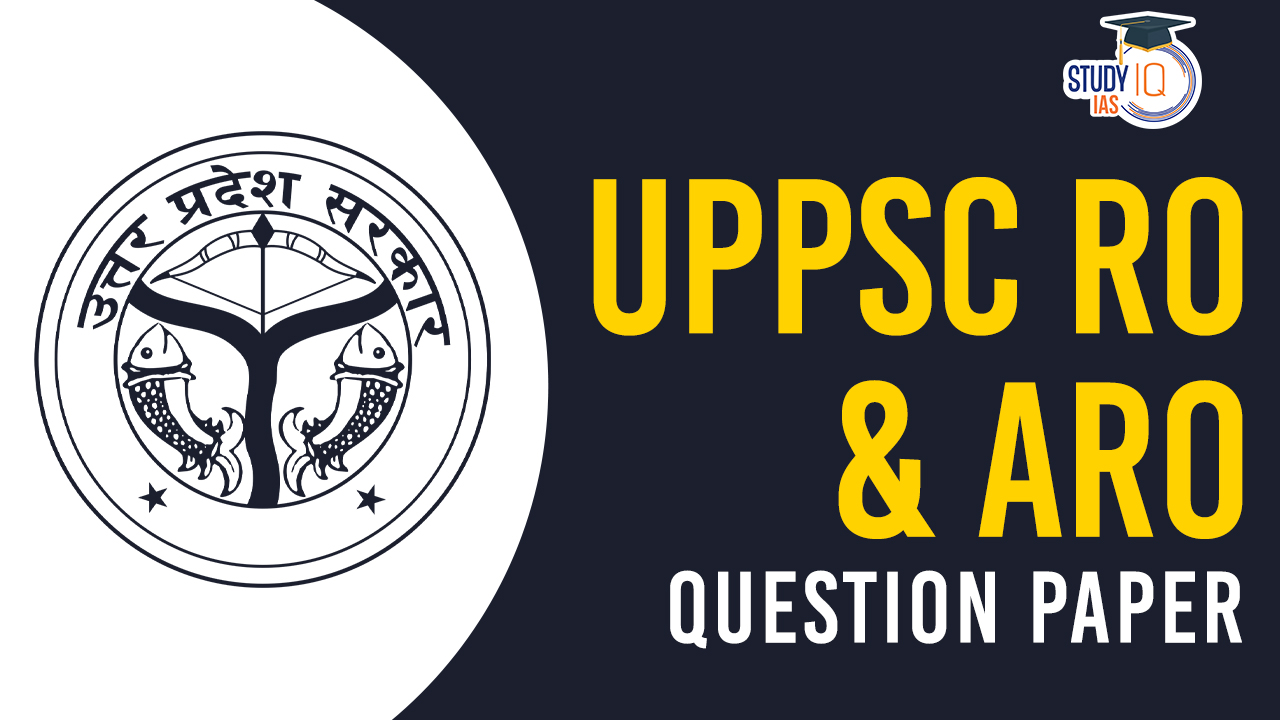
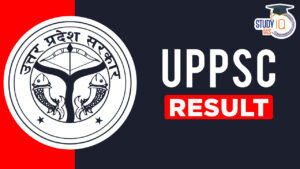 UPPSC Prelims Result 2025 OUT: Download ...
UPPSC Prelims Result 2025 OUT: Download ...
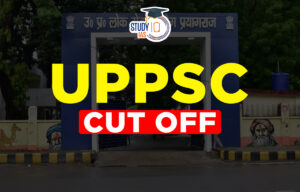 UPPSC PCS Cut Off 2025: Check Expected a...
UPPSC PCS Cut Off 2025: Check Expected a...
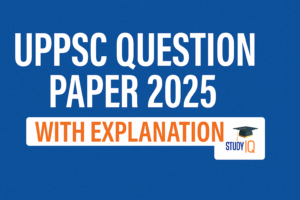 UPPSC Prelims Answer Key 2025 in Hindi w...
UPPSC Prelims Answer Key 2025 in Hindi w...

